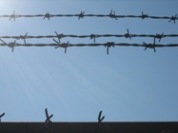Human rights abuse in AustraliaMandatory detention is the act of detaining illegal immigrants for an unspecified period of time. This legislation was first introduced in Australia in 1992. The policy is generally applied to people seeking refuge from their own country. They are often detained for long periods of time and as a result many suffer psychological damage. Opportunities to leave the detention centres are limited. With the change of government in 2007 there were some policy changes, but mandatory detention is still seen as an important part of Australian border control. The United Nations Human Rights Committee (UNHRC), in the case of A v Australia, declared the lengthy detention of asylum seekers to be an abuse of human rights. It could be argued that detention of children in detention centres in Australia breaches the Convention on the Rights of the Child (CROC) ‘A’ escaped from Cambodia and sought refuge in Australia. For the next 4 years he was detained in immigration centres. He complained to the United Nations Human Rights Committee (UNHRC). The UNHRC found that this was an abuse of human rights. The UNHRC deemed this to be in breach of the International Covenant on Civil and Political Rights (ICCPR) due to the length of time ‘A’ had been detained and for refusal to allow him to appeal his detention in an Australian court. The UNHRC declared that Australia should pay compensation to ‘A’. However the Australian Government rejected the findings and refused to pay any compensation. Read a full record of this case. D&E v Australia is much the same as the above case. An Iranian family had been kept in detention for 3 years and 2 months. The UNHRC agreed that this was in breach of the ICCPR, however the Australian Government disagreed. Read more about the case here.
Specific articles within CROC relate to children who are refugees
Learn more about CROC here. To learn more about the rights of the child visit UNICEF |
|
